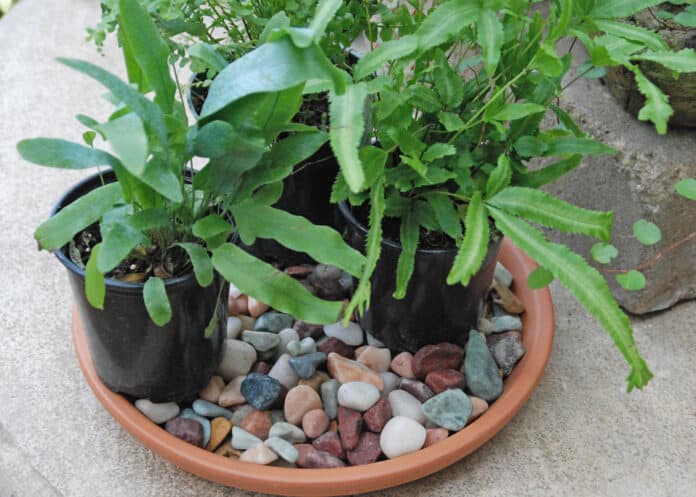
Too much of a good thing can mean death for indoor plants. Overwatering is a good example of this and a common problem for indoor gardeners. For others it’s the opposite extreme, allowing plants to go too dry. Knowing when to water your indoor plants can increase gardening success and eliminate the stress of uncertainty.
The first step is to throw away your watering schedule. Start watering plants based on their individual need not the date on the calendar. Consider the type of plant, container material and size as well as other growing conditions.
Get to know your plants by checking the plant tag, online resources and books. Those native to tropical climates or wet soils such as peace lily, baby tears and papyrus prefer moist soil. Plants from drier locations like cacti, succulents, Chinese evergreens, ponytail palm and snake plants do best when the soil dries between watering.
Evaluate the indoor growing conditions. Plants located in bright light and warm homes where the humidity is low lose moisture faster and need more frequent watering. Cooler homes, higher humidity and lower light conditions mean longer stretches between watering plants.
Adjust watering as the seasons change. Shorter, often gray days of winter mean plants dry out more slowly. When the heat and air conditioner are turned on, the humidity level drops and plants dry out more quickly. Plus, many plants rest in winter and prefer drier soil.
Check plants growing in small pots, breathable terra cotta containers and fast draining growing mixes more often and water as needed. Plants growing in larger containers and those made of plastic, glazed ceramic and similar materials dry out more slowly.
Use your finger to determine when plants need to be watered. Stick your finger an inch or so below the soil surface of small pots. You’ll need to go a finger length deep for larger containers. And for succulents and cacti feel the soil through the drainage holes on the bottom of the pot. Water thoroughly until the excess runs out the drainage holes as needed.
Extend the time between watering with self-watering pots and watering aids. These have reservoirs that slowly provide water to plants over time. Or amend the soil with a moisture-retaining product. The wetting agents in most potting mixes lose effectiveness after a month or two. These pellets continue working long after this, so you’ll be watering less often.
Make watering easy, so it feels like an opportunity to enjoy each individual plant instead of a chore. Use a watering can with a long narrow spout, making it easy to apply water over the entire soil surface and under the leaves and crown of the plant. This reduces the risk of disease that can occur when the top growth remains wet.
Set plants on saucers or trays filled with pebbles. The excess water collects in the tray and the pebbles elevate the container above the water. This eliminates the need to empty the water that collects and remains in the saucer for more than thirty minutes.
With more experience watering indoor plants, it will become second nature. That means you’ll have more time and opportunity to enjoy and even expand your indoor garden.














